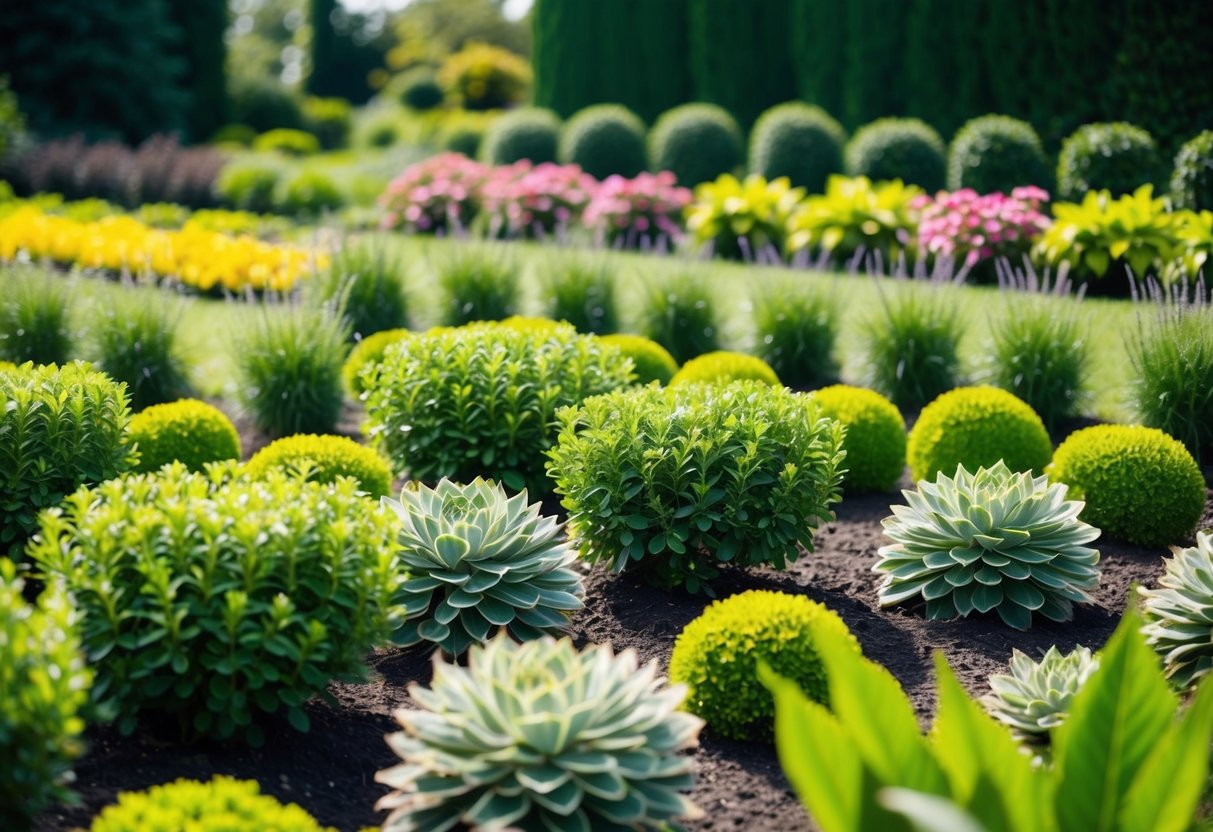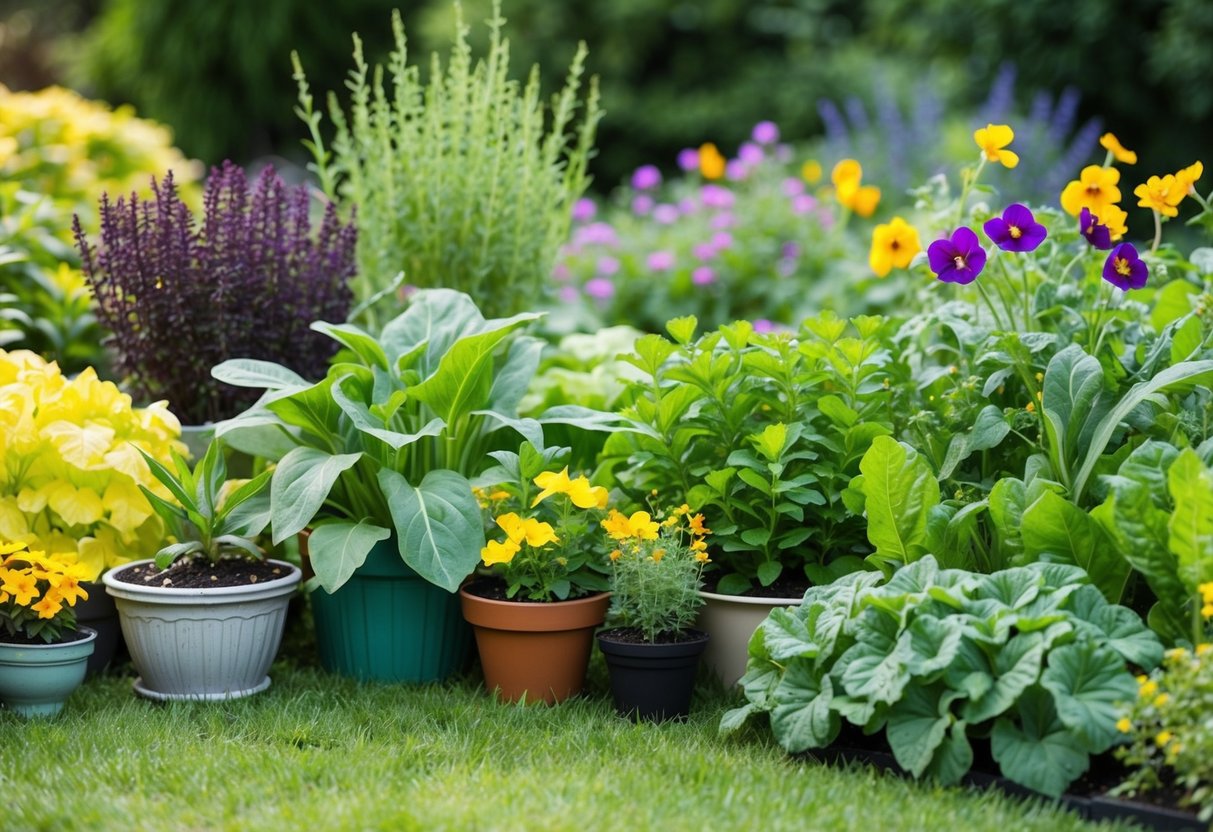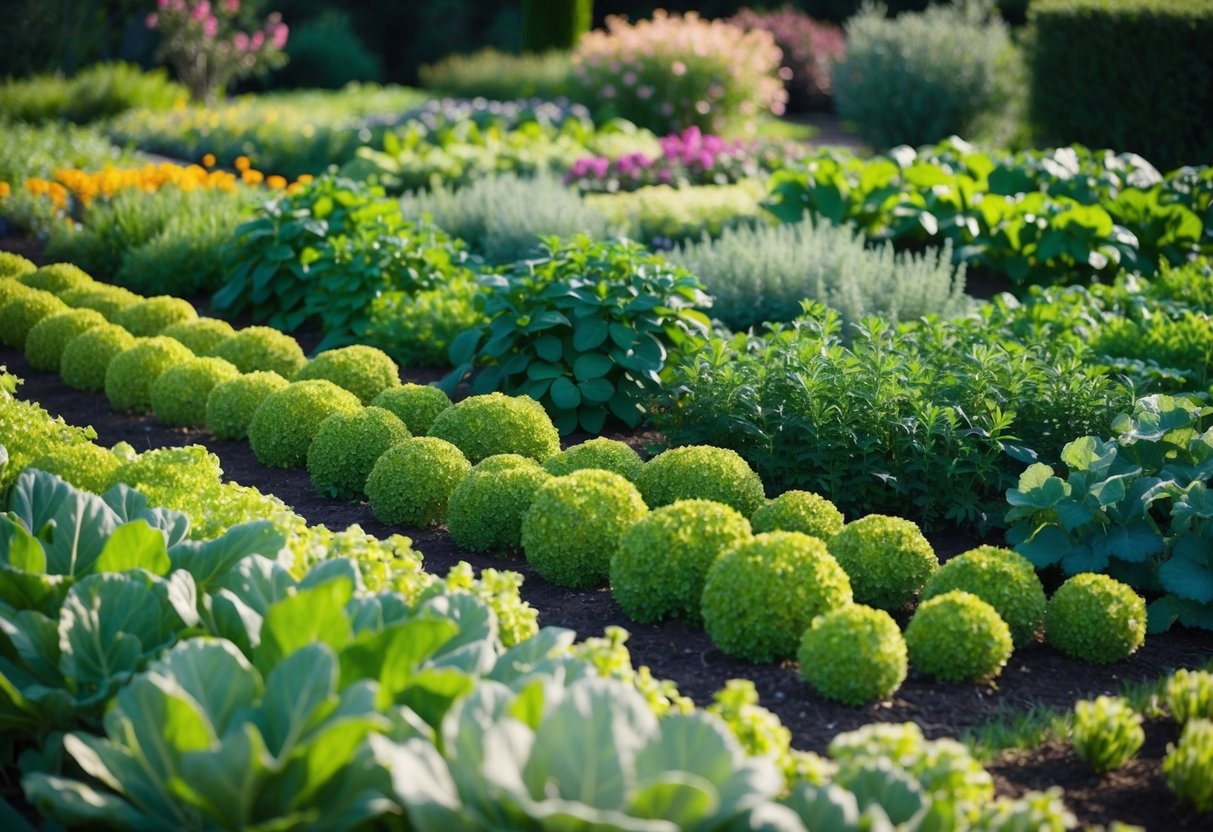How do I Arrange My Garden with Plants? Tips for a Beautiful Layout
Arranging plants in your garden can transform your outdoor space into a beautiful and welcoming environment. It’s more than just picking the right plants; it’s about creating a layout that allows your plants to thrive and complement each other. To make your garden look its best, try grouping plants in drifts of odd numbers like 3, 5, or 7, which adds more visual interest and impact. This method creates a natural flow and helps ensure your garden remains visually appealing.

Paths are also an important aspect of your garden design. Make sure to leave at least two feet of space between garden beds so you can easily access and maintain your plants. Consider using materials like grass, cardboard covered with wood chips, or gravel to form these paths. This will provide both functionality and style to your garden layout.
Don’t forget to add a variety of plant heights to enhance the depth and texture of your garden. Filling the middle with medium-sized plants, and placing shorter ones in the front, creates layers that add dimension. Including a mix of succulents and taller plants can add color and texture, ensuring your garden stays interesting throughout the seasons.
Getting Started with Your Garden Plan

To create a successful garden, consider where to place your plants, how to prepare the soil, and how to manage sunlight and shade. Doing these things will help you get a great garden layout that works well for your space and plants.
Choosing the Right Location
Start by picking a sunny area for your garden because most vegetables need 6 to 8 hours of sunlight each day. Choose the sunniest spot in your yard and make sure it is close to a water source. Avoid places known as frost pockets, which are areas where cold air tends to settle, as they can damage plants.
Next, think about accessibility. You will want easy access for watering, planting, and harvesting. A spot near your home might be most convenient. If space is tight, consider raised beds or vertical gardening to maximize your area.
Take time to visualize your garden layout. This step can help you plan pathways and make sure everything you plant has enough room to grow. A well-thought-out location makes a big difference in how your garden thrives.
Understanding Soil and Drainage
Healthy soil is crucial for a thriving garden. Test your soil to know its pH level and nutrient content. You might need to add compost or other organic matter to improve the soil fertility. Good drainage is also key. Plants need enough water, but too much can harm them.
To check drainage, dig a small hole and fill it with water. If the water drains away within a few hours, your soil likely has good drainage. If not, consider raised garden beds or containers, which can help with drainage issues. This is especially useful if your garden site has heavy clay soil or other drainage problems.
Keep an eye on soil moisture. Overwatering can lead to root rot, while dry soil can stress plants. Mulch can help retain moisture and protect the soil surface.
Planning for Sunlight and Shade
Most vegetables require full sun, but some plants prefer a bit of shade. Plan to place taller plants like tomatoes or corn at the back or north side of your garden. Taller plants can provide shade to shorter, shade-loving crops such as lettuce or spinach.
Consider the direction of sunlight. South-facing gardens get the most light in the northern hemisphere. Pay attention to how buildings or trees affect your garden’s light throughout the day, as they can cast shadows or provide necessary shelter from harsh midday sun.
Creating a plan that balances sunshine with shade will lead to healthier plants and a more productive garden. Proper planning ensures each plant gets the ideal amount of light and space to grow.
Designing Your Garden Layout

When designing your garden layout, consider different planting methods and creative ways to maximize space. Focus on your garden’s aesthetics and functionality, incorporating pathways and unique design elements to make your garden both beautiful and easy to navigate.
Traditional Rows vs. Raised Beds
Traditional rows are a classic choice for gardens, especially for large spaces. They allow for easy access and are ideal for plants that require more distance between them.
Raised beds, on the other hand, offer several benefits. They improve drainage and can be filled with high-quality soil, providing better growing conditions. Raised beds are great if your soil quality is poor or if flooding is an issue. They are also visible and easy to maintain, reducing the need for bending and weeding.
Consider your space and the types of plants you’re growing when choosing between these two styles. If growing a diverse array of plants, raised beds can be more accommodating, especially for a vegetable garden layout.
Square Foot Gardening and Vertical Solutions
Square foot gardening is ideal for maximizing limited space. In this method, a garden is divided into squares, each usually 1 foot by 1 foot. This style minimizes waste and allows for precise planting. It’s perfect for beginner gardeners looking to plan efficiently.
Vertical solutions can complement square foot gardens, especially in tight areas or urban settings. Use vertical gardening techniques to grow herbs, flowers, or vegetables, making the most of small spaces. By growing upwards with trellises or wall planters, you can increase yield without needing more ground space. This is particularly useful when experimenting with a vertical garden.
Incorporating Pathways and Aesthetics
Pathways are essential in garden design, providing both aesthetic appeal and practical access to plants. They guide movement through your garden, ensuring you can easily reach each section for planting, watering, or harvesting.
Use materials like gravel, stones, or mulch to create a natural look. For a neat appearance, consider borders or edging. Paths also reduce soil compaction, which benefits plant roots.
Aesthetics play a significant role in garden layout. Choose focal points such as a small fountain, sculpture, or a colorful flowerbed to add visual interest and charm, helping transform your garden into a delightful outdoor space.
Selecting Plants for Your Garden

Choosing the right plants is key to a successful and vibrant garden. This involves considering a mix of vegetables, herbs, flowers, and understanding their planting relationships to create a harmonious environment.
Vegetables: From Root to Fruit
Start by selecting vegetables that suit your climate and space. Tomatoes, cucumbers, and peppers are great for sunny spots and belong to the Solanaceae family. Plant them with plenty of space to grow upward and spread out. Leafy greens like spinach, cabbage, and lettuce are more shade-tolerant.
Roots like carrots, beets, and radishes add depth to your garden. Melons, squash, and pumpkins from the Cucurbit family can trail along the ground. Consider combinations from the Legume family like beans and peas to naturally enhance soil nitrogen levels. This diversity creates a balanced ecosystem.
Herbs and Flowers: Adding Beauty and Utility
Incorporate herbs such as basil, mint, and garlic to add both beauty and function. Herbs can deter pests and attract beneficial insects like bees and ladybugs. Basil pairs nicely with tomatoes, enhancing their flavor in companion planting.
Flowers add color and charm. Nasturtium is a beautiful choice that also has insect-repelling abilities. Including flowers like marigolds helps deter pests and encourages pollinators to visit your garden. Combine herbs and flowers to boost your garden’s aesthetics and health.
Companion Planting for a Happy Garden
Companion planting is the practice of growing plants together for mutual benefit. Tomatoes and basil are famous companions, enhancing growth and flavor. Plant alliums like onions and leeks near carrots to deter pests. Beans pair well with corn, as they support each other in growth and nutrient sharing.
Consider the Cucurbit family, like squash and pumpkins, alongside flowers like nasturtium to ward off bugs. Encouraging biodiversity with a variety of plant families helps reduce disease and pest outbreaks. By thoughtfully grouping plants, you promote a thriving and resilient garden ecosystem.
Sustainable Gardening Practices

To make your garden eco-friendly and healthy, focus on efficient irrigation methods, use techniques like crop rotation and succession planting, and support local pollinators and wildlife. These practices help conserve resources and promote biodiversity in your garden.
Irrigation Techniques for Efficiency
Efficient water usage can greatly improve your garden’s sustainability. Consider collecting rainwater in barrels to use for watering. This method helps save water and protect the environment. Drip irrigation systems are another great option, delivering water directly to plant roots and reducing evaporation.
Mulching can also play a role in conserving water. By applying a layer of mulch around your plants, you help retain moisture, suppress weeds, and reduce soil erosion. These methods contribute to a more sustainable gardening routine.
Crop Rotation and Succession Planting
Crop rotation helps maintain soil health by changing the type of crops you grow in each area of your garden. This practice prevents nutrient depletion and reduces the risk of disease. Plan your garden by dividing it into sections, and rotate different plant families each season.
Succession planting can ensure a continuous harvest throughout the growing season. By planting new crops as others reach maturity, you maximize your garden’s productivity. This approach also reduces pest outbreaks by not giving pests a chance to establish homes in long-term plant setups.
Attracting Pollinators and Protecting Wildlife
Creating a pollinator-friendly garden supports a healthy ecosystem. Plant a variety of flowers to attract bees, butterflies, and other pollinators. Choose native plants, as they are best suited to your local environment and require less maintenance.
Incorporate features like birdbaths or small logs for wildlife to hide and rest. Avoid using harmful chemicals or pesticides, as they can negatively impact wildlife. By taking these steps, you create a welcoming habitat for beneficial insects and animals, contributing to a balanced garden ecosystem.
Maintaining Your Garden

Taking care of your garden involves regular upkeep, managing pests, and reaping what you’ve sown. By focusing on these areas, you can ensure your garden stays healthy and productive throughout the seasons. Consistent attention to these tasks keeps your plants thriving and boosts your garden’s overall appeal.
Regular Care and Seasonal Tasks
Regular care is the backbone of any well-maintained garden. Water your plants consistently, especially during hot and dry periods. Make sure to water deeply at the roots rather than just soaking the leaves. Mulching around your plants helps retain moisture and keeps weeds at bay.
Seasonal tasks include pruning, planting, and rotating plants. In spring, you might plant new seeds and trim dead branches. During summer, focus on weeding and watering frequently. Autumn is perfect for planting bulbs and uprooting expired plants to prepare for winter. A garden journal can help you track what needs doing each month.
Dealing with Pests and Diseases
Pests and diseases can quickly ruin a garden if left unchecked. Monitor your plants regularly for signs of trouble, such as yellowing leaves or bite marks. Integrated pest management (IPM) is a balanced approach that combines cultural, biological, and chemical methods.
For natural pest control, attract beneficial insects like ladybugs and spiders. Handpicking pests or spraying plants with a gentle soap solution can often solve minor issues. Look up specific solutions for common pests that affect the types of plants you grow. If diseases occur, remove infected parts immediately and maintain cleanliness to prevent them from spreading.
Harvesting and Enjoying the Bounty
Harvesting is one of the most rewarding parts of gardening. Pick your fruits, vegetables, and herbs when they’re ripe to enjoy their best flavors. Check each plant’s requirements, as some should be harvested early in the morning, while others are best picked later.
Use your fresh produce in meals or preserve them by freezing, drying, or canning for future use. Share your bounty with friends and family to spread the joy of your garden. This part of gardening not only fills your table but also connects you with the process of nurturing and growth every step of the way.







